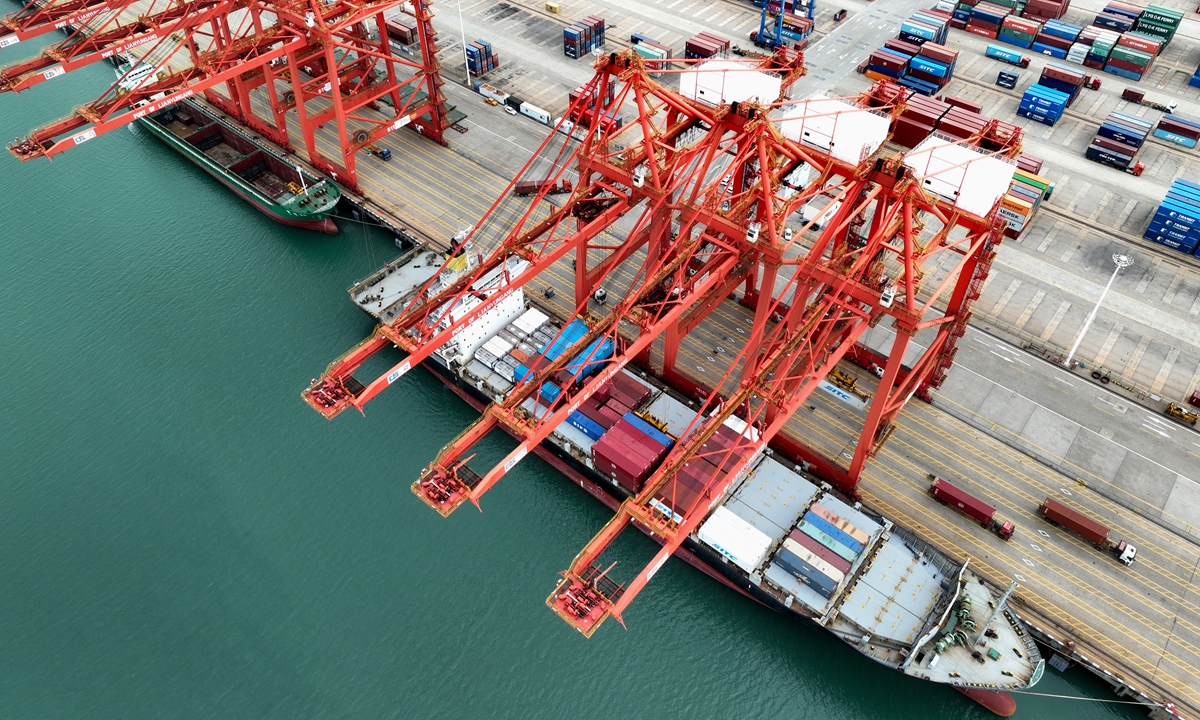
Photo: VCG
China's foreign trade in September registered month-on-month growth for a second consecutive month, with the trade volume reaching a new monthly high for the year, official data showed Friday, the latest sign indicating that the world's second-largest economy is on track toward recovery as stimulus kicks in and market confidence returns.
According to the General Administration of Customs, August and September recorded two consecutive months of month-on-month positive growth in imports and exports. Notably, in September, the scale of imports and exports reached a new monthly high for the year, hitting 3.74 trillion yuan ($511.9 billion).
In September alone, exports dipped 0.6 percent year-on-year in yuan-denominated terms, while imports fell 0.8 percent.
In the first three quarters of the year, China's foreign trade reached 30.8 trillion yuan in yuan-denominated terms, down 0.2 percent year-on-year. Exports rose 0.6 percent year-on-year, while imports fell 1.2 percent year-on-year.
China's foreign trade has withstood pressure despite an unstable world economy. As China's economy maintains an upward trend, and domestic growth drivers are strengthened, combined with measures for stabilizing trade being implemented, it is believed that the momentum of foreign trade will become more solid, and quality will be further elevated, Lü Daliang, spokesperson from the General Administration of Customs told a press conference in Beijing on Friday.
The spokesperson noted that in the next stage, China's foreign trade operations are expected to receive continued support from a range of favorable factors, including an improving domestic economic performance. Domestic PMI index has recorded a four-month consecutive increase, with August witnessing accelerated growth in industrial added value and social retail consumption compared to the previous month. The recent Golden Week holidays showcased the robust vitality of the Chinese retail economy.
Industries such as shipping, engineering machinery, and household appliances, which are key export sectors, have seen further growth in market share, international competitiveness, and brand influence. Optimism among export and import-focused companies has also increased compared to the previous month, said the official.
"Overall, with strong policy support, concerted efforts from businesses, and collaboration from all sides, the export trend in the fourth quarter is expected to continue stabilizing and improving," Lü said.
From a macroeconomic perspective, the third quarter of this year might represent the "trough" in China's economic growth for the entire year. If policy measures aimed at stabilizing the economy continue to be enforced in the subsequent phases and there are no significant negative shocks that would worsen the situation, there is hope that the Chinese economy will begin to recover from this "low point" in the fourth quarter. Anbound, an independent think tank, said in a note sent to the Global Times.
This recovery could provide some support toward achieving an annual economic growth target of 5 percent, according to the think tank.
Separately, China's foreign trade with partner countries of the Belt and Road Initiative (BRI) grew 3.1 percent year-on-year to 14.32 trillion yuan in the first three quarters of 2023, accounting for 46.5 percent of China's total foreign trade. An index measuring trade between China and BRI partner countries hit 165.4 in 2022, compared with 100 in 2013, reflecting the growing role of the BRI cooperation in facilitating trade.
Trade with ASEAN rose 0.8 percent year-on-year to 4.68 trillion yuan accounting for 15.2 percent of China's total foreign trade, as ASEAN continues to be China's largest trading partner.
Global Times




